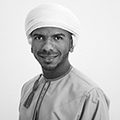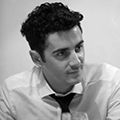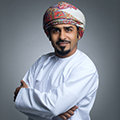
Oman is hot right now.
It is located just outside the strait of of Hormuz, is a natural gateway to the booming Arabian Gulf region. Its close proximity and strong synergies with markets in Africa and India and access routes to Pacific Rim markets all goes to make Oman an increasingly significant player in the transport sector in the eyes of the global trading fraternity. Facing rapid population growth, Oman currently stands at 4.4 million with nationals constituting 50.5 per cent of the total population. The concentration of the population is more 50% living in Muscat and the Batinah coastal plain northwest of Muscat, developing as well as a highly stretched urban area, causes also by the morphological formations, and where the two extremes are 80 Km away.
In this scenario we truly believe in public transport infrastructures as primary needs of development, social and urban interaction among attractors of the city itself. In its nature transportation embraces dynamic complex movement of interchange between passenger and citizens, between built and unbuilt territories, between different layers of uninterrupted streams of flows overlapped. In the age of globalization a key challenge is to define a new set up of transportation as a sum of physical mobility and increased flows of information and its interrelation with architecture. A hub as an essential engine of regional and global economic growth.
If Architecture is landscape then buildings are mountains [ Vincente Guallart, lecture IaaC 2015]
The exploration of Wadi geological events as emergence formations through its implementation with algorithmic and generative approach in order to propose, test and simulate a gradient transition between nature and urban environment. It will result in a summation of forces, pressures and constraints which realize and dictate forms and functions.
The GSS Muscat will focus in the development of new concepts of mobility, in order to propose an augmented system of transportation with its spatial and organization continuity, and to create the ultimate user experience in the metropolitan city of Muscat.
The International Central Bus Terminal will center the investigation from urban scale to building scale as tectonic landscape articulated by flow of its vectors, adaptable to the environment conditions. The system of folding and faulting will design the definition of set of rules describing the environmental agents and its complex behavior, thus producing a performative and adaptive leisure generator.
A design approach will take in account a new configuration of bottom-up and self-organizing design strategies, tools and techniques, being a multi-disciplinary study and its proposition that form follows flow, in order to implement a dynamic and mutable contemporary structures.
The research agenda is an intense period of 13 days composed of lectures, dynamic studio design, studio trip, learning tools, in order to facilitate experimentation and discovering, extending the projection of the contemporary architectural discourse in national and international arab cultures. Participants will work with daily ingredients such as: fluid dynamic, data driven design, data mapping, programming, material behavior, morpho-ecologies, advanced structures, composite tectonic, digital fabrication through a rigorous computational design workflow.
GSS Muscat aims to incorporate a computational design methology as central role from analysis during inception stage to manufacturing in the direction of merging the intimate relationship between architecture and engineering and to empower design creativity.
The digital fabrication sessions intent is to leverage digital design and manufacturing for perceptual, spatial, and formal affect and the reverse engineering approach for its optimization. Participants will explore the flow of information from design to fabrication, implementing nowadays equipment and build their project proposal.
PROGRAMME DIRECTORS / TUTORS

Founder and Design Principal of Spatialconnection(s), an emergent international architectural and design firm, with his daily responsibility of management, research and design vision of medium-large projects mainly located in Gulf region.
He completed his master degree in Architectural Engineering at University of Pisa (Italy).
Before founding Spatialconnection(s) he has practiced in offices in Italy, China, and The Netherlands. He has worked as design architect on several high profile projects including Gousen Securities Tower, Shenzhen with studio Fuksas, Wisdom Valley with Nbbj and University Church in Liepzig (Germany) for Erick van Egeraat plus some prize winning competitions. His expertise of computation as method of investigation and optimization for the alternative forms of engineered architecture, as methods to drive the design, development, and construction for building new innovative urbanscape.
Through academic research, teaching and practice, Dario continues an exploration into experimental algorithmic and generative design processes for complex geometries, in order to produce a social, environmental, economical performative design solutions and demonstrating their buildability. In 2012 he published “Digital creative contamination – Transcripts of an algorithmic complexity through Rhino.Grasshopper” a best seller book on algorithmic and parametric design.
Dario has started to pursue this line of research at INARCH (National Institute of Architecture) in Rome for the Master Emerging Technologies where was the teacher of Scripting and Computational Geometry. He has taught in several courses and workshops both in national and international institutions.
Dario is currently programme co-director of IaaC GSS Muscat.

Head of the Engineering Department at the Higher College of Technology with several years of experience in education, research and private practice in the Sultanate of Oman.
He is a graduate of Penn State University (2010) with a Bachelors of Architectural Engineering with a focus in structures. After a few years of experience, he then obtained a Master’s of Science in Architectural Engineering from the University of Sheffield (2013) where he specialized in thermal comfort and natural ventilation. During his studies, he worked with Monodraughtâ in testing Cool Phaseâ, their award winning natural ventilation system through thermal modelling.
Upon returning to Oman, he started his teaching career at the Higher College of Technology and was project coordinator in the winning team of the Echo House competition sponsored by the Research Council. Samir then went on to become the Head of Section of Civil and Architectural Engineering where together with Spatialconnection(s) teaches digital technologies in architecture by implementing computer-based concepts and methods in design and building construction to the college. As Head of the Engineering Department he is still actively involved in teaching and is a frequent jury panel member for other architectural institutes in Oman.
Samir has been working with Azri Architects, in Muscat, since 2010. He is now an Associate Architect at the firm and has been designing and managing various projects from residential complexes to commercial buildings and hotels being a local partner in the Middle East region for Claudio Modola Architectural Design Studio.
Samir is currently programme co-director of IaaC GSS Muscat.

Paolo Alborghetti is Perth based architect and computational designer, he holds a Msc in architecture from Politecnico of Milano and graduated with a research thesis about body/cognition relationship in multi-agent based simualtions. He worked and collaborated with several offices around the world, like Decode in Paris, Loop.ph in London, LAVA in Stuttgart, Woods Bagot in Perth, working on a wide range of projects, from installations to large scale and complex shape projects, from concept design to fabrication and has taught multiple workshops about computational design and digital fabrication. His interests focus on creative coding, data informed design, responsive and interactive environments, agency and simulation, digital fabrication, open source culture and social science.
Paolo is currently tutor of design research of IaaC GSS Muscat.

Founder and Principal of BusafiArc.
An Architect and Designer working on the physical, physitual, and virtual space and form with close ties to architecture education institutes in Oman he is a visiting lecturer of architecture design and a regular at architecture design crits. Keen on elevating the profession of architecture in Oman, he is a co-founder and a board member of Oman Center of Architects.
Having completed an MArch degree under the direct supervision of the late Zaha Hadid, Hani Rashid, and Sejima from Die Angewandte in Vienna which focused on exploring spaces of simultaneity where the physical and virtual coexist utilizing 3D Scanning and Virtual Reality.
Currently focused on researching physitual architecture, space and form, computational architecture design and advanced fabrication techniques.
TUTORS’ ASSISTANT

Michel Azzi is a Lebanese-born architect holding a diploma in architecture from the Holy spirit university of kaslik, Lebanon. After moving to Barcelona, Michel completed this year his master degree in advanced architecture at the institute of advanced architecture of Catalonia. Since 2014, he’s been investigating urban morphologies under war and conflict conditions starting from his diploma final project situated in Nicosia’s Buffer zone to his final thesis project working on the permanent food supply prototype to civilians under siege in war zones. Michel is specialized in the field of parametric design and has assisted in many seminars as computation instructor and juror.
IAAC GSS is open to creative and innovative people who are interested in fields such as architecture, urban planning, digital fabrication, design, etc., searching for a multidisciplinary experience in an international environment. No previous skills are required, although CAD design, programming and digital fabrication skills are welcome. The official language of the course is English, but assistance will be given in Arabic language.
After the course, the participants will have gained theoretical and applicative knowledge about current urban innovative strategies. Moreover, they will become familiar with parametric software, data visualization and the use of digital machines. In the end of the course all participants will receive a Global Summer School Diploma.
Each participant is responsible to investigate what documents are required via the embassies in their country of origin. The school will provide a confirmation letter regarding the participation in the course, and will assist where possible in the visa process.
The fee for GSS Muscat is OMR 400 for students and OMR 800 for professionals and includes all material costs needed for the course. No additional registration fee is required. Flight tickets, accommodation and food are not included in the fee. Each participant should bring his/her own computer with the software installed. Further details about the software will be given to the participants upon acceptance.
Only 30 limited seats available to be part of GSS Muscat.
In order to register to the Global Summer School, participants need to submit the online application form, where they will be asked to upload a letter of intent and a CV. Portfolio is not required. The applications are open until the 30th of May 2017.